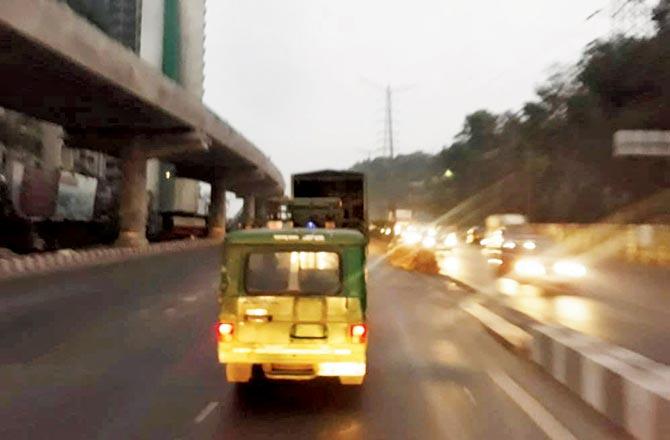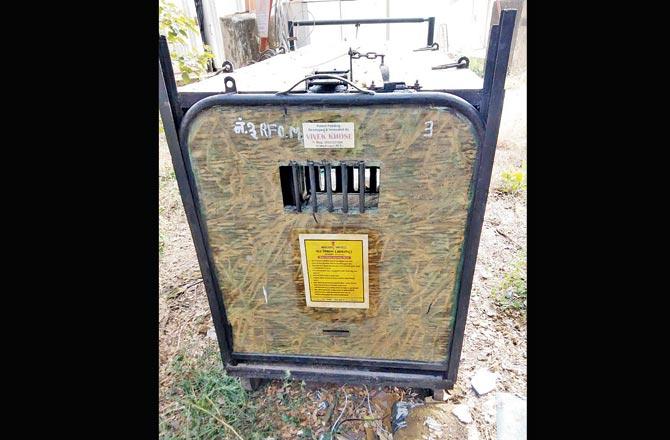Forest Department officials and local wildlife activists successfully manage to cage the elusive cat that had SEEPZ office-goers on the edge

The leopard was trapped at 5.30 am and released in SGNP within three hours
The viral leopard spotted in SEEPZ, Andheri East, this month, was finally trapped in a cage in the wee hours of Thursday and released into its natural habitat of Sanjay Gandhi National Park (SGNP) within three hours. In a previous instance, this leopard was rescued in Marol and released in the national park in April this year.
Trapping the cunning cat was not an easy job. A group of volunteers and wildlife researchers had been tracking the elusive cat's every movement through camera traps. It was only after they got clues about the paths used by it frequently that they were able to set up a cage to trap it.
ADVERTISEMENT

The SEEPZ leopard seen inside its cage
Perennial problem
The blurring of boundaries between human settlements and animal habitats is a perennial problem that the city is going to have to mitigate. The captured leopard wandered to SEEPZ from SGNP, this being the second time it has entered a human settlement. With there being every possibility of the big cat returning, the camera trap project monitoring the movements of leopards in the Aarey Milk Colony is one step in dealing with such eventualities.
The team of volunteers, which monitors leopard activity in Aarey for the Thane Forest Department (Territorial), assisted forest officials, Honorary Wildlife Warden Mayur Kamath and wildlife researcher Nikit Surve in trapping the leopard.

The leopard was monitored through camera traps for over 12 days
Voluteers set up camera trap
Kamath said, "While the cage was set after getting permission from the Chief Wildlife Warden only a few days ago, the volunteers had set up camera traps at strategic locations right from the day the leopard was first sighted. They studied its movements to be prepared with information in case the need for trapping arose."
The leopard's movements were studied for 12 days. "For the past five to six days, volunteers spent nearly 10 hours every night near the cage. Lured by the hen kept in a secondary cage, it finally walked into the first cage at around 5.30 am on Thursday. We decided to trap the leopard because it was roaming in an area with high human density. We wanted to avoid man-animal conflicts," added Kamath.

The cage in which the leopard was trapped
The cage was moved to a van and released in a forested patch. "It was released in its natural habitat in less than three hours un in the presence of Veterinary Officer Dr Shailesh Pethe," said Dr Jitendra Ramgaonkar from the Thane Forest Department (Territorial).
Catch up on all the latest Crime, National, International and Hatke news here. Also download the new mid-day Android and iOS apps to get latest updates
 Subscribe today by clicking the link and stay updated with the latest news!" Click here!
Subscribe today by clicking the link and stay updated with the latest news!" Click here!







